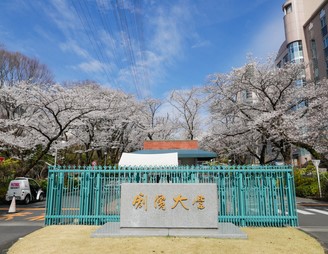-
Profile
- Biography
- Bio: Overview
- Early Life
- Encountering a Mentor
- Attending "Toda University"
- Learning Leadership
- Political Involvement and Persecution
- Assuming the Presidency
- Trip to the USA
- The 1960s—Bold Beginnings
- Founding the Komeito Party
- Further New Ventures
- The 1970s—Dialogue, Breaking New Ground
- Resignation
- The 1980s—Peace through Dialogue
- Excommunication
- Developing Educational Exchange
- A Question of Motivation
- Timeline
- Photo Album
- Curriculum Vitae
- Recollections
- Biography
- Buddhist Philosopher
- Peacebuilder
- Educator
- Proponent of Culture
An Educational Legacy
"Several years before Soka University was opened, young men and women came together to help clear the land . . . filled with a desire to contribute in some way to the new school. They were drenched in perspiration, their hands blistered and bleeding from the hard manual work . . . Most of these volunteers never had the opportunity to attend university themselves . . . I hope that none involved in Soka University will ever forget that the school was created in this way through the contributions and support of countless ordinary citizens . . . I believe that the university's mission should be to serve people who, much as they might have wished, have not themselves been able to receive higher education."1--Daisaku Ikeda [Read full text]

A plaque at the main entrance of Soka University bearing "Soka University" in the calligraphy of Tsunesaburo Makiguchi, educator and first president of Soka Gakkai (Hachioji, Tokyo)
Today, at the main gate of Soka University in Hachioji, Tokyo, is a bronze inscription of the Chinese characters for Soka University in the calligraphy of Tsunesaburo Makiguchi. The establishment of a school system running to university level was Makiguchi's dream, a goal he envisioned in his landmark work, The System of Value-Creating Pedagogy (1930-34).
The outbreak of World War II had dashed any possibility of Makiguchi ever realizing this objective. In 1943, he and Toda were arrested for their criticism of the official ideology of Shinto-based emperor worship. Makiguchi died in prison; Toda survived and was released immediately prior to the end of the conflict, in July 1945.
Ikeda recalled how Toda continued, even in the turmoil of the postwar years, to cherish his mentor's vision: "In the late autumn of 1950 when my mentor's business was in the direst of circumstances, he spoke to me in a relaxed, confident manner of his plans for Soka University . . . He said to me: 'Daisaku, let's build a Soka University! It might not be possible in my lifetime. But in that case, I bequeath the task to you. Let's make it the best university in the world!'"2
Talking to students at Soka University in Hachioji, Ikeda described the sense of determination he harbored to see this vision realized: "I have fought to actualize the unrealized dreams and ideals bequeathed to me by my two illustrious predecessors. I have striven with all my might to make the world aware of the greatness of these two men, who lived amidst a series of persecutions and never had a chance to travel outside Japan themselves."3
Chronology of School Establishment
(see also Educational Institutes)Soka Junior and Senior High Schools, Tokyo, 1968 Soka University, Hachioji, Tokyo, 1971 Soka Girls Junior and Senior High Schools, Osaka, 1973 Sapporo Soka Kindergarten, Hokkaido, 1976 Tokyo Soka Elementary School, 1978 Kansai Soka Elementary School, Osaka, 1982 Soka Junior and Senior High Schools went coeducational in 1982; Soka Girls Junior and Senior High Schools in Osaka followed suit, changing their name to Kansai Soka Junior and Senior High Schools. Soka Women's College opens on the grounds of Soka University, 1985 Soka University, Los Angeles Campus, 1987 Hong Kong Soka Kindergarten, Hong Kong, 1992 Singapore Soka Kindergarten, Singapore, 1993 Malaysia Soka Kindergarten, Malaysia, 1995 Brazil Soka Kindergarten, Brazil, 2001 Soka University of America, Aliso Viejo, 2001 Soka Happiness Kindergarten, South Korea, 2008 Soka International School Malaysia, 2023

A class at Brazil Soka Schools (São Paulo, Brazil) |

Students at Soka International School Malaysia (Seremban, Malaysia) |














